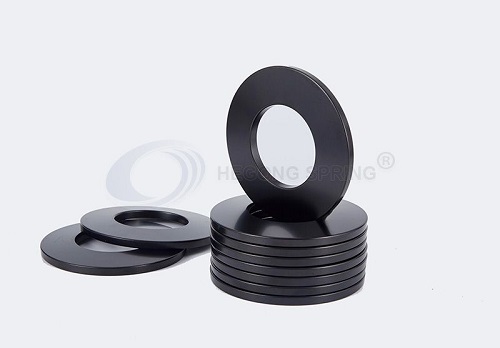What Is Scaffolding?

A scaffold, also called scaffolding or staging, is a temporary structure that allows people to stand on a stable platform for work at height or in hard-to-reach places.
These temporary structures are often used in constructing, maintaining, or repairing buildings, bridges, and other man-made structures by supporting work crews and materials.
History of Scaffolding
Scaffolding is a temporary structure that is typically made from metal poles and wood planks and used to support construction workers, inspectors, cleaners, and others who need to work at height.
The use of scaffolding dates as far back as the stone age—in fact, there's evidence that scaffolding was used over 17,000 years ago by those who made the famous paleolithic cave paintings at Lascaux.
Images of scaffolding have been found on ancient artifacts such as the Berlin Foundry Cup, a Greek drinking cup made in the 5th century BC.
Peoples as diverse as Nubians, Egyptians, and Chinese have documented the use of scaffolding for constructing tall buildings, using rudimentary scaffolds made of wood and tied at the top with ropes.
In the modern age, scaffolding has developed far beyond these early versions, and now comes in several different designs made from several different types of materials.
Scaffolding Parts
Here are all the parts used to make scaffolds:
ㆍStandards.This is a framework that consists of vertical members supported on the ground, on drums, or embedded into the ground.
Ledgers. Tubes with a case wedge fixing device on their end that are positioned horizontally between two standards, defining the length of the scaffold bay.
ㆍBraces. Braces are fixed diagonally to the standards.
ㆍPutlogs. A putlog connects the wall being worked on and the ledger. A putlog hole is made in the side of a building to receive a putlog.
ㆍTransoms. A transom is a type of ledger putlog that is supported by both ledgers.
Bridle. Bridles support one end of the putlog and are used to bridge an opening in a wall.
Recommended article:
What Types of Structures Benefit from Post-Tensioning?
Basic Types of Steel Building Structure
What is the use of Scaffolding Base Jack?
Knowledge about coconut shell mosaic
Is PVC flooring same as vinyl?
STC Ratings of Glass
8 Critical Questions to Ask Before Hiring a Flooring Installer
ㆍBoarding. During the working process, boarders serve as horizontal platforms for supporting workmen and materials.
ㆍGuard rail. A rail set up at the same level as a ledger.
ㆍToeboard. A parallel set of boards, supported on putlogs, which provides protection at the working platform level.
ㆍLadder scaffolding. Scaffolding ladders allow workers to ascend and descend the constructed scaffold easily.
ㆍScaffolding wheels. Wheels at the bottom of the scaffold that allow easy movement of the scaffold from one place to another.
The Benefits of Scaffolding
There's a reason scaffolding has been used for thousands of years—it works. To this day, scaffolding remains one of the most useful and efficient ways for people to work at height.
Here are the primary advantages to using scaffolds for work at height:
ㆍAccess. Scaffolding can allow unhindered, stable access to almost any area of a structure
ㆍBalance. Scaffolds put workers on a firm footing, giving them the ability to balance themselves in different positions while working.
ㆍEase of construction. Scaffolding is relatively easy to assemble and disassemble, and can be put up and taken down fairly fast.
ㆍLong-lasting. Most scaffolds can last for a very long time, whether they're made from wood or from steel.
ㆍSafety. Safety is one of the most significant advantages of scaffolding, since it gives workers a stable platform for their work. That being said, the ideal solution for work at heigh is to reduce or even remove the need for a person to be present—in the last section of this guide, we'll cover how drones can help inspectors reduce their need to work at height.
ㆍServes as a bridge. A number of construction activities require workers to take long and winding routes to reach certain locations on the job site, which is an enormous waste of time. Bridging points in scaffolding can help solve this problem by reducing the distance that workers have to travel.
We are a scaffolding system supplier, also produces u-head scaffolding If you are interested in our products, please contact us now!
The Ultimate Guide to Chinese Mosaic Tiles
Designing a Sports Complex: A Guide to Creating a Winning Facility
Exploring the Versatility of Thread Rebar
Melting Deicing Device: Revolutionizing Winter Maintenance
How Do Dancing Water Fountains Work?
Benefits and highlights of an Expandable Container House
How to build a wood slat wall?











